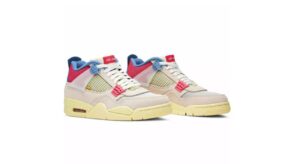The Evolution of Shopping: From Brick-and-Mortar to E-Commerce

Introduction
Shopping has undergone a significant transformation over the past few decades. From the traditional brick-and-mortar stores to the rise of e-commerce, the way consumers shop has evolved dramatically. This article explores the journey of shopping, highlighting the key changes and the future of retail.
The Era of Brick-and-Mortar Stores
Traditional Shopping Experience
Brick-and-mortar stores have been the cornerstone of shopping for centuries. These physical stores offered a tactile shopping experience where customers could touch, try on, and feel products before purchasing. The interaction with sales associates and the immediate gratification of taking items home were significant advantages.
Community and Social Interaction
Shopping at physical stores was more than just a transaction; it was a social activity. People often went shopping with friends or family, making it a communal experience. Malls and shopping centers became social hubs where people gathered, not just to shop but also to dine, watch movies, and socialize.
Challenges of Brick-and-Mortar Stores
Despite their popularity, brick-and-mortar stores faced several challenges. High operational costs, limited store hours, and geographic constraints restricted their reach. Additionally, the availability of products was often limited by shelf space and inventory constraints.
The Rise of E-Commerce
The Digital Revolution
The advent of the internet brought about a significant shift in the retail landscape. E-commerce emerged as a powerful force, allowing consumers to shop online from the comfort of their homes. The convenience of 24/7 shopping and the ability to browse through a vast array of products transformed the shopping experience.
Benefits of E-Commerce
E-commerce offers numerous advantages over traditional shopping. Consumers can compare prices easily, read reviews, and make informed decisions. The ability to shop from anywhere in the world opened up new markets for retailers. Online stores also benefit from lower overhead costs compared to physical stores.
Challenges of E-Commerce
However, e-commerce is not without its challenges. Concerns about security, privacy, and the inability to physically inspect products can deter some consumers. Shipping costs and delivery times also impact the shopping experience. Despite these challenges, e-commerce continues to grow, driven by technological advancements and changing consumer preferences.
The Hybrid Shopping Model
Omnichannel Retailing
The future of shopping is likely to be a blend of both brick-and-mortar and e-commerce models. Omnichannel retailing aims to provide a seamless shopping experience across various platforms, allowing consumers to switch between online and offline shopping effortlessly. Retailers are integrating online and offline channels to enhance customer experience and improve sales.
Click-and-Collect
One popular trend is the click-and-collect model, where consumers can purchase items online and pick them up at a physical store. This model combines the convenience of online shopping with the immediacy of in-store pickup. It also drives foot traffic to physical stores, potentially leading to additional purchases.
Augmented Reality and Virtual Shopping
Technological innovations like augmented reality (AR) and virtual reality (VR) are set to revolutionize shopping further. AR apps allow consumers to visualize how products will look in their homes, while VR can create immersive shopping experiences. These technologies bridge the gap between online and offline shopping, offering a more interactive and engaging experience.
The Impact of COVID-19 on Shopping
Accelerated Shift to Online Shopping
The COVID-19 pandemic accelerated the shift to online shopping as lockdowns and social distancing measures restricted access to physical stores. Consumers turned to e-commerce for essential and non-essential goods, leading to a surge in online sales. Retailers had to adapt quickly, enhancing their online presence and optimizing supply chains to meet increased demand.
Changes in Consumer Behavior
The pandemic also changed consumer behavior, with a greater emphasis on health and safety. Contactless payments, curbside pickup, and home delivery became essential services. The experience highlighted the importance of flexibility and adaptability in the retail sector.
Conclusion
The evolution of shopping from brick-and-mortar stores to e-commerce and now towards a hybrid model reflects the dynamic nature of consumer preferences and technological advancements. While physical stores continue to play a vital role, the convenience and reach of e-commerce cannot be ignored. The future of shopping lies in creating an integrated, seamless experience that leverages the strengths of both online and offline channels. As retailers innovate and adapt to changing trends, consumers can look forward to a more convenient, engaging, and personalized shopping experience.







